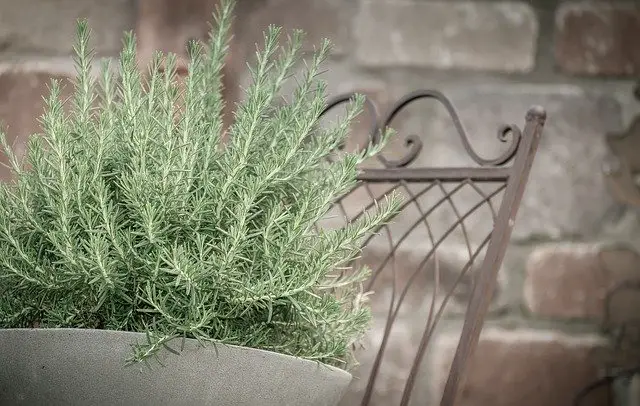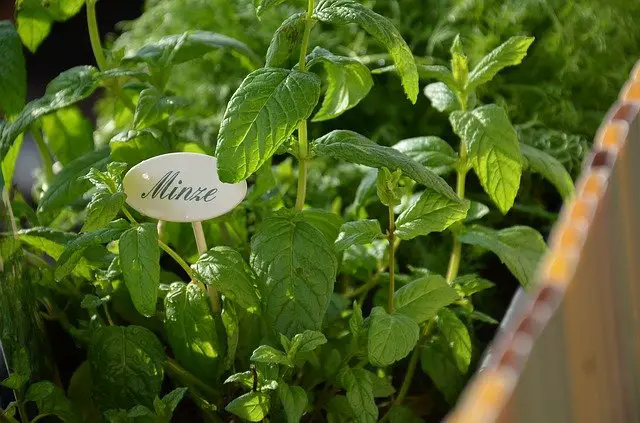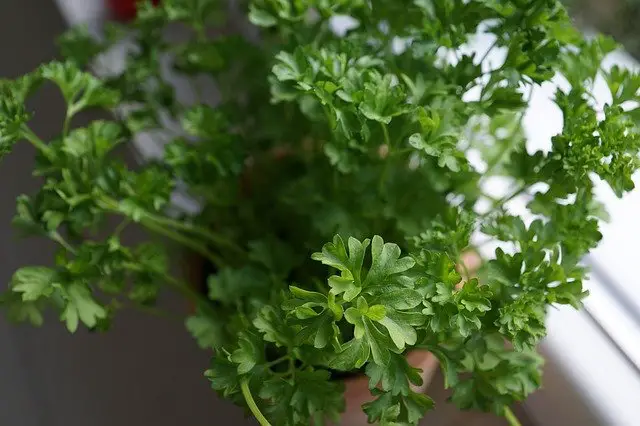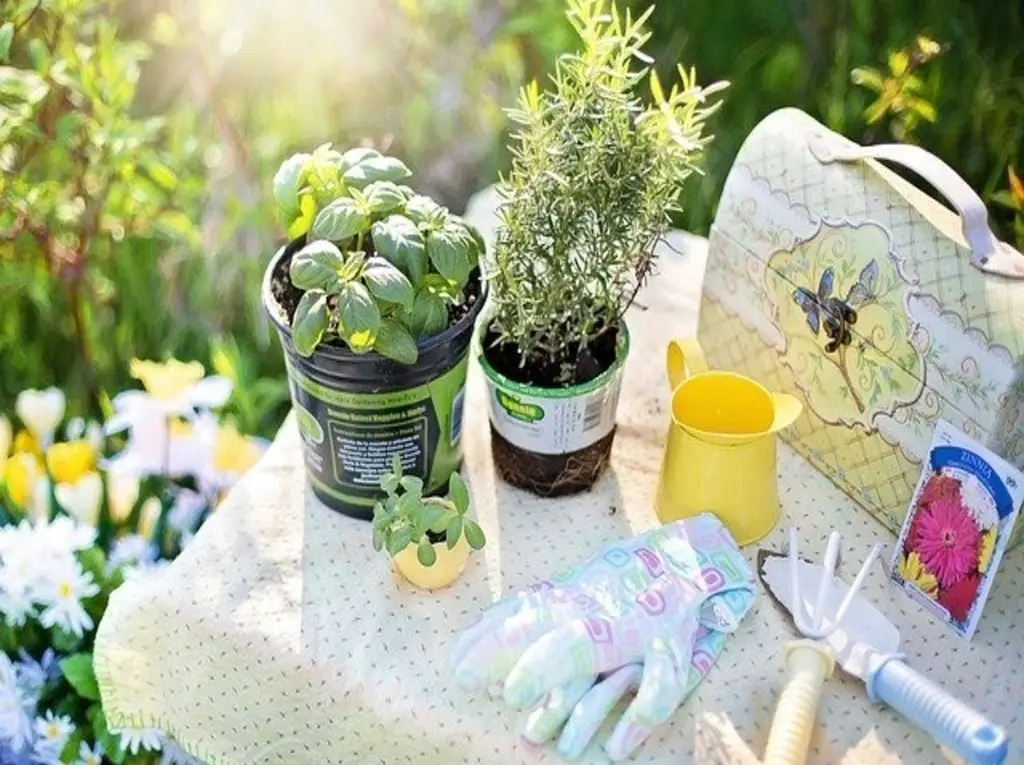Easiest Herbs to Grow in Pots: Simple Picks for Beginners!
If you’re looking to grow herbs in small spaces or just prefer the convenience of container gardening, you’re in the right place! In this article, we’ll cover the easiest herbs to grow in pots, perfect for beginners or anyone wanting a low-maintenance herb garden. Whether you have a balcony, patio, or windowsill, we’ll help you choose the best herbs that thrive in containers with minimal effort.
Table of Contents
Why Choose Herbs for Container Gardening?
Benefits of Growing Herbs in Pots
Herbs are one of the most versatile and rewarding plants to grow in containers, making them a top choice for gardeners of all skill levels. Growing herbs in pots allows you to maximize small spaces, such as apartment balconies or kitchen windowsills, and gives you the flexibility to move your plants to catch the best sunlight. Containers also make it easier to control soil quality, drainage, and moisture levels, reducing the risk of pests and diseases. With potted herbs, you can enjoy the convenience of harvesting fresh leaves just when you need them, adding a burst of flavor and nutrition to your meals. Additionally, many herbs have attractive foliage and pleasant scents, making them a decorative and aromatic addition to any living space.
Top 7 Easiest Herbs to Grow in Pots
1. Basil
Basil is a beloved staple in kitchens around the world and an excellent choice for novice gardeners. Its lush, green leaves grow quickly in containers, especially when provided with well-draining soil and ample sunlight. Regular harvesting not only supplies you with a steady stream of fresh basil but also encourages the plant to grow fuller and more robust. To keep your basil thriving, pinch off any flower buds as soon as they appear, as flowering can cause the leaves to lose their signature sweet flavor. Popular varieties like Genovese, Nufar, and Lemon Basil adapt well to pot culture, making them ideal for everything from homemade pesto to refreshing summer salads. Place your basil in a warm, sunny spot and watch it flourish throughout the growing season.

Tips for Success:
- Maintain consistently moist soil, but avoid letting it become waterlogged.
- Remove flower buds promptly to preserve the best flavor in the leaves.
- Ensure your basil receives at least 6 to 8 hours of sunlight each day for optimal growth.
2. Oregano
Oregano is celebrated for its bold, savory flavor, making it a key ingredient in many Italian, Mediterranean, and Latin dishes. This versatile herb thrives in containers, perfect for small gardens or patios. Oregano prefers full sun and well-drained soil, making it ideal for low-maintenance gardeners. To encourage bushier growth and prevent legginess, pinch back the stems regularly. The aromatic leaves enhance your dishes, while the delicate white or purple flowers are also edible, providing a beautiful, flavorful garnish for salads, soups, and savory meals. With minimal care, oregano will flourish, offering a steady supply of fresh leaves throughout the season and adding a fragrant touch to your outdoor space.

Tips for Success:
- Allow the soil to dry out slightly between waterings, as oregano prefers drier conditions.
- Pinch back stems frequently to promote compact, healthy growth.
- Enjoy both the leaves and flowers for culinary uses and decorative flair.
3. Rosemary
Rosemary is a fragrant, evergreen herb with needle-like leaves that add a distinctive flavor to a wide range of dishes. It’s particularly well-suited to container gardening, as pots provide the excellent drainage that rosemary requires. This herb loves basking in the sun and benefits from good air circulation, making it ideal for outdoor patios or sunny indoor spots. In regions with cold winters, growing rosemary in pots allows you to bring the plant indoors when temperatures drop, ensuring it survives year-round. To keep your rosemary healthy, water only when the top inch of soil feels dry and avoid overwatering, as this can lead to root rot. Regular pruning will help maintain a tidy shape and encourage the plant to produce more flavorful foliage.

Tips for Success:
- Allow the soil surface to dry out before watering again to prevent soggy roots.
- Position your rosemary in a location with plenty of sunlight and good airflow.
- Trim the plant regularly to promote bushiness and prevent it from becoming woody.
4. Thyme
Thyme is a resilient, aromatic herb that thrives in containers and requires minimal attention. Its tiny, flavorful leaves and trailing growth habit make it a charming addition to any potted herb collection, especially when allowed to spill over the edges of a container. Thyme prefers full sun and well-drained soil, and it can tolerate periods of drought, making it perfect for gardeners who might forget to water occasionally. There are many varieties to choose from, including English thyme for classic culinary use and Lemon thyme for a citrusy twist. Thyme’s delicate flowers also attract pollinators, adding ecological value to your garden. With its versatility and hardiness, thyme is a must-have for any beginner’s potted herb garden.

Tips for Success:
- Water deeply but infrequently, allowing the soil to dry out between waterings.
- Provide at least 6 hours of sunlight per day for the best flavor and growth.
- Experiment with different varieties to add diversity to your cooking and garden.
5. Mint
Mint is famous for its refreshing aroma and is one of the easiest herbs to grow, especially in containers. In fact, mint’s vigorous growth can quickly become invasive in garden beds, so pots are the perfect way to keep it contained and manageable. Mint thrives in rich, moist soil and appreciates regular watering, making it a forgiving choice for beginners. There are countless varieties to explore, from classic peppermint and spearmint to more unusual types like chocolate mint and apple mint. Frequent harvesting not only provides you with a steady supply of leaves for teas, desserts, and cocktails but also encourages the plant to grow more densely. With its rapid growth and delightful scent, mint is a rewarding addition to any potted herb collection.

Tips for Success:
- Use a nutrient-rich, moisture-retentive soil to keep mint happy.
- Water consistently to maintain the moist conditions mint prefers.
- Harvest often to prevent the plant from becoming leggy and to promote lush growth.
6. Parsley
Parsley is a versatile, nutrient-rich herb that is both easy to grow and incredibly useful in the kitchen. Available in curly and flat-leaf varieties, parsley adapts well to container life and can be grown as an annual or biennial, depending on your climate. It prefers a spot with full sun but can tolerate partial shade, making it suitable for a range of indoor and outdoor locations. Parsley benefits from regular watering and occasional feeding to support its lush, green growth. When harvesting, always pick the outer leaves first, allowing the inner stems to continue developing. With its bright flavor and attractive foliage, parsley is an excellent choice for beginner gardeners looking to add both beauty and utility to their potted herb garden.

Tips for Success:
- Keep the soil consistently moist, especially during hot weather.
- Feed with a balanced fertilizer every few weeks to encourage strong growth.
- Harvest leaves from the outer edges to maintain a healthy, productive plant.
7. Lemon Balm
Lemon balm is a delightful herb known for its fresh, citrusy scent and calming properties. Closely related to mint, it shares the same vigorous growth habit, making it well-suited to container gardening where its spread can be contained. Lemon balm thrives in rich, moist soil and appreciates regular watering, especially during dry spells. Its soft, green leaves are perfect for teas, salads, and desserts, adding a subtle lemon flavor to your culinary creations. Lemon balm is also valued for its ability to attract pollinators and beneficial insects to your garden. With its easy-going nature and pleasant aroma, lemon balm is a wonderful addition to any beginner’s potted herb collection.

Tips for Success:
- Plant in a container with good drainage and use a rich, organic soil mix.
- Water frequently to keep the soil evenly moist, but avoid waterlogging.
- Regularly trim the plant to encourage bushy growth and prevent flowering.
Additional Easy Herbs for Pots
If you’re ready to expand your potted herb garden, consider adding a few more easy-to-grow favorites. Sage is a sturdy, aromatic herb that pairs beautifully with meats and sauces and thrives in medium sun and well-drained soil. Chives offer a mild onion flavor and are incredibly simple to grow and harvest, making them perfect for garnishing dishes or adding to salads.
Cilantro is a fast-growing herb best planted in cooler weather, as it tends to bolt quickly in the heat. Dill is another excellent choice, especially in late spring, and benefits from regular harvesting to prevent it from going to seed too soon. These herbs not only add variety and flavor to your cooking but also enhance the beauty and productivity of your container garden.
Expert Tips for Thriving Potted Herbs
Choosing the Right Pot and Soil
Selecting the proper container and soil is crucial for healthy, productive herbs. Choose pots with drainage holes to prevent excess water from accumulating and causing root rot. The size of the pot matters too: larger containers provide more room for roots to grow, which can lead to healthier, more robust plants. Use a high-quality potting mix that is light and well-draining, and consider adding compost or organic matter to boost fertility. When combining herbs in one pot, group those with similar sunlight and water requirements to ensure each plant thrives. Taking the time to set up the right foundation will make caring for your potted herbs much easier and more rewarding.
Watering and Feeding
Proper watering and feeding are essential for keeping your potted herbs healthy and productive. Most herbs prefer soil that is moist but not soggy, so be sure to water deeply and allow the surface to dry out slightly before watering again. Overwatering is a common mistake, so always check the soil moisture before adding more. Fertilize your herbs with a balanced, slow-release fertilizer at planting time, and supplement with liquid feed every few weeks during the growing season. Be careful not to over-fertilize, as this can lead to excessive leaf growth with less flavor. Consistent care will help your herbs produce lush, flavorful foliage all season long.
Sunlight Requirements
Sunlight is one of the most important factors for healthy herbs. Most varieties need at least 6 to 8 hours of direct sunlight each day to develop their best flavor and growth. If you’re growing herbs indoors, place your pots near a south-facing window or under grow lights to provide ample light. Outdoors, position your containers in a spot that receives consistent sun throughout the day. If your space is shaded, choose herbs that tolerate lower light, such as mint or parsley. Monitoring your plants and adjusting their location as needed will ensure they receive the light they need to thrive.
Harvesting for Healthier Plants
Regular harvesting is not only the reward of growing your own herbs but also a way to keep your plants healthy and productive. Snip leaves and stems frequently, always taking from the top or outer portions of the plant to encourage new growth from the center. Avoid removing more than one-third of the plant at a time to prevent stress. Frequent harvesting prevents herbs from flowering and going to seed, which can reduce the quality and flavor of the leaves. By developing a routine of gentle, regular harvesting, you’ll keep your herbs vigorous and ensure a continuous supply of fresh ingredients for your kitchen.
Common Mistakes to Avoid
- Overwatering: Many beginners tend to water too often, which can drown the roots and lead to disease. Let the top inch of soil dry out before watering again.
- Crowding: Planting too many herbs in a single pot can restrict airflow and root space, leading to stunted growth and increased risk of pests.
- Ignoring sunlight: Placing herbs in areas with insufficient light results in weak, leggy plants that struggle to produce flavorful leaves.
- Neglecting to harvest: Failing to regularly snip your herbs can cause them to flower and lose their best taste, as well as become overgrown and unruly.
Avoiding these common pitfalls will help you enjoy a more successful and satisfying herb gardening experience.
Creative Ideas for Your Potted Herb Garden
- Mix and match: Combine herbs with similar needs in larger containers to create a mini kitchen garden that’s both practical and visually appealing.
- Decorative containers: Use colorful, patterned pots or repurpose items like teacups, tin cans, or baskets for a unique and stylish herb display.
- Vertical gardening: Take advantage of limited space by using hanging baskets, wall-mounted planters, or tiered shelves to grow herbs upward instead of outward.
- Mobile gardens: Place your pots on rolling carts or trays so you can easily move them to catch the best sunlight or shelter them from harsh weather.
- Themed gardens: Create themed collections, such as a pizza herb pot with basil, oregano, and thyme, or a tea garden with mint and lemon balm.
These creative approaches not only maximize your growing space but also add a personal touch to your herb garden, making it a true reflection of your style and culinary preferences.
Final Thoughts
Starting an herb garden in pots is an accessible, enjoyable way to dip your toes into gardening, no matter your experience level or available space. By choosing resilient, easy-to-grow herbs like basil, oregano, rosemary, thyme, mint, parsley, and lemon balm, you set yourself up for success and a season full of fresh, homegrown flavors.
With the right containers, soil, and care, your potted herbs will provide beauty, fragrance, and culinary inspiration right at your fingertips. Embrace the process, experiment with different varieties, and savor the satisfaction of nurturing your own thriving herb garden. Before you know it, you’ll be snipping fresh herbs for every meal and enjoying the many benefits of your green-thumbed efforts.
“Herbs are the most useful and giving plants! Tending an herb garden is sheer pleasure, offering both beauty and bounty in the smallest of spaces.”
Ready to embark on your potted herb gardening adventure? Choose your favorite herbs, gather your pots and soil, and let the joy of growing begin!
This guide is crafted to provide original, expert-driven advice for beginners, ensuring you have all the knowledge and inspiration you need to grow a flourishing potted herb garden.








